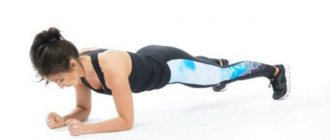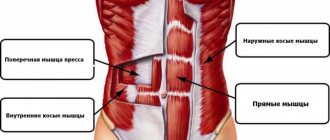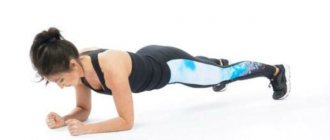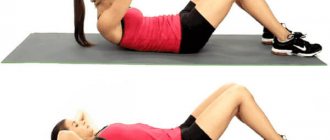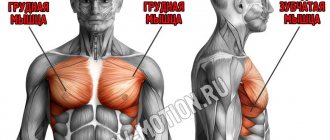Everyone knows about the positive effects of dynamic (aerobic) exercises on the body. What are the benefits or harms of static loads? Are isometric exercises necessary at all?
It is not easy for a person who is not a specialist physiologist to understand this. On the one hand, they say that static loads in general and isometric gymnastics, including, lead to rapid fatigue, muscle overstrain, and decreased performance. Enthusiasts who vigorously promote the use of isometric exercises as a useful element of training are trying to prove the benefits of such exercises and deny their possible harm to health. Who is right and who is wrong?
What are isometric exercises
Isometric training is a type of physical activity in which a muscle is tensed without contracting. Classic fitness movements, such as bicep curls, are eccentric in nature. Such exercises almost always have two phases of movement, in one of which the muscle contracts. Isometrics is the opposite type of load to eccentric. The most popular example of isometric exercise is the plank. Despite the absence of a contraction in which the muscle would perform its direct functions (flexion of the body), the bar perfectly loads the abdominal area.
Isometric exercises are suitable for developing strength, although to a greater extent they train endurance and the ability of muscles to not acidify for a long time. This leads to a gradual increase in the anaerobic threshold, which dramatically affects the level of overall fitness and physical fitness.
Necessary equipment
To perform isometric exercises, you need support, which can be walls, chairs, or window sills. For stretching, use belts, ropes or towels.
Immediately before training, it is recommended to perform a set of exercises that help stretch the muscles. This helps warm up and prepares the muscles for further work.
Don't miss the most popular article in the section: Body drying for girls. Training program, detailed nutrition menu for the month by day.
Benefits and disadvantages of isometric exercises
The main benefits of isometric exercise:
- Increased muscle endurance.
- Developing the ability of the muscle to remain under load longer (due to developing the ability to withstand the release of lactate).
- Improved muscle tone.
- Stimulates muscle growth.
- Improving muscle definition.
- The ability to train muscles even in cases where direct eccentric loads are contraindicated.
Disadvantages of isometrics:
- They lead to greater straining (especially with improper breathing during isometric exercise), which can increase cardiovascular pressure and negatively affect blood vessels, especially with excess body weight.
- They lead to hypertrophy of muscle fibers worse than eccentric movements.
- Lead to rapid adaptation of the body to stress. This requires an increase in the time the muscle is under load, which in the long term leads to severe muscle over-acidification and increased fiber destruction.
In general, any sets of isometric exercises should be included in the training process in moderation. This is the only way they can provide benefits without pronounced negative consequences. You should also stop trying to perform the movements for the maximum amount of time. It is much better to ensure gradual depletion without severe over-acidification. For example, stand in the plank not for 4-5 minutes as your fitness develops, but do shorter sessions (increasing their number throughout the day) for 1-2 minutes. This way, you will be able to gain the same amount of load, but not have a negative impact on muscle hypertrophy.
Technique of conducting classes
Of course, in order to achieve results and not waste energy in vain, it is important to learn the correct technique for doing the exercises. There are a number of tips that will help you do everything right. First, before training, you need to warm up and stretch to warm up your muscles and tendons. Secondly, it is important to practice proper breathing. The exercise should be performed only while exhaling.
Strength needs to be increased gradually, without sudden jerks. If during the process you feel a sharp pain, then you need to stop, take a break, and then try again, only more carefully.
You should not make an effort or stay in a static position for long. Then you can take a short rest and move on to the next approach.
Isometric exercises are recommended to be performed in the morning, after light exercise, because they invigorate better than coffee. And done before bedtime, they can prevent you from falling asleep.
Due to the large loads on the muscles, the total duration of isometric training, as a rule, does not exceed 15 minutes. But during this time the athlete manages to do several approaches of several repetitions for different muscle groups.
The number of repetitions for each exercise should be from 2 to 5. Moreover, the effort should increase each time. Let's say, with three approaches, you should do a minimum effort of 50% for the first time (to warm up). The second time, make an average effort - 75%. And for the third and last time, make the maximum effort, giving 100%. If you follow this system, isometric training will become much more effective.
Examples of isometric exercises by Alexander Zaas
Alexander Zass or “Samson” is a historical figure in strength sports, an old-school strongman who served as an example for many generations of strength athletes. He developed a number of exercises that he used in his training. Zass isometric exercises are aimed not only at developing strength and endurance, but also at creating aesthetic muscles.
All of Zass' movements were performed using a chain or thick rope, although today it is more effective to do them with a rubber band, selecting the load and tension to suit your physical capabilities.
Overhead hold
Raise your arms up slightly wider than your shoulders, pull the tourniquet between them and try to spread your arms as wide as possible. Work not only your arms and shoulders, but also your chest and back muscles, involving as many fibers as possible.
Front stretch
Fold the tourniquet several times, bring your arms together in front of your chest so that your fist is closer to the elbow of the opposite arm. Try to spread your arms to the sides, bringing your fists beyond the level of your elbows.
Stretch behind your back
Place the tourniquet behind your back, at the level of your shoulder blades. Hold the edges of the tourniquet with your hands and try to bring them together at chest level. Work your back muscles and triceps.
Pull from the floor
Stand up straight, take the rubber by the edges, step on the middle with your feet (feet shoulder-width apart). Pull the tourniquet to the level where your hands are at the level of your buttocks and maintain the position using the muscles of your trapezius and arms.
Breeding from the front
Take the edges of the expander in your hands and bring them together at stomach level (palms pointing down). Bend your left elbow, lift your left arm up in an arc, lower your right arm down symmetrically so that the tourniquet is stretched diagonally, repeat the movement on the other side.
Biceps stretch
Step on the edge of the tourniquet with one foot (or take it behind your leg). Raise your arm at the elbow, as in the dumbbell biceps curl exercise. Lock the position at the peak point and hold it for as long as possible.
Pushups
Place the edges of the loop behind your fingers and place the tourniquet at the level of your shoulder blades. Perform a regular push-up and maintain the position at the top.
8. Stretching behind your back (without bringing your hands together)
Place the tourniquet behind your back at the level of your trapezius. Extend your arms forward and to the sides in a wide stance and hold the position.
chest wrap
Exhale and wrap the tourniquet tightly around your chest. Fix the ends so that tension is maintained. Take a powerful breath for 8-10 seconds and try to open your chest as much as possible and straighten your latissimus muscles.
Stretch from the hip
Fold the tourniquet several times. Place your feet slightly wider than shoulder-width apart and bend your knees slightly for stability. Hold one edge with your hand near the knee, pull the other edge along the stomach so that the muscles of the chest, shoulder and back take an active part. Repeat the same movement for both sides.
Stretch with a turn
Stand straight, put your right leg forward and to the side, bending at the knee. Take your left one slightly back and rest your foot on the floor. Fold the tourniquet several times and place it over the thigh. Try to pull both arms down while keeping your back straight.
Handstand
Attach the harness to any support at floor level. Place it behind the back of your head and take a handstand. Try to hold the position for at least 7-10 seconds.
Straightening your back
Secure one end of the tourniquet with your feet, and loop the other end behind your neck with your body tilted forward. Keep your hands on the floor. Straighten your back while keeping your neck in a neutral position. Hold the position for 7-10 seconds without fully straightening your body.
Arm and leg raise
Place one end of the tourniquet under your right leg. Hold the second one in your right hand. Bend your elbow while doing a biceps curl. At the same time, bend your knee, trying to bring your heel closer to your buttocks. Hold the position for as long as possible, then do the same approach on the left side.
All exercises by Alexander Zass can be done at home.
A set of isometric training at home
A classic example of a set of isometric exercises at home for men and women, suitable for beginners and advanced athletes.
Holding the body with the neck
Stand with your back to the wall, rest your head. Take half a step forward, arms along the body, body forming a straight line from heels to head. Hold your body with the back of your head against the wall for 30 to 60 seconds. Repeat the same exercise for the sides and forehead.
Pushups
Lower yourself to the bottom of the push-up without touching the floor. Hold the position for as long as possible. The optimal duration of the approach is 10-20 seconds.
Palm squeezing
Bring your palms together at chest level. Try to press your palms into each other as hard as possible for 10-15 seconds per set.
Calf raise
Stand on your toes and hold the position for as long as possible.
Exercise "chair" against the wall
Go to the wall, take your legs one step forward. Lower your body down so that your thigh and shin are bent at a right angle. Hold the position for 30-40 seconds per set.
Back exercise
Isometric exercises for the back cannot be done well without additional equipment (bar or harnesses). TRX loops or even a towel that is fixed around the support are ideal for this. Just hang on it at the peak point, as if you were doing a horizontal push-up.
Biceps exercise
The same movement is done for the biceps, but with the arms bent at the elbows.
Auxotonic mode
Since it is called combined, it is easy to guess that it combines several different modes. In particular, this is the alternation of myometric and plyometric (sometimes isometric is also included).
Any movements in athletics and weightlifting that are performed during a full cycle of exercises require the muscles to work in a combined mode. Thanks to it, all human muscles are trained evenly and fully.
Source
Recommendations for women and men
There are no particular differences between men and women in performing isometrics, therefore all recommendations are universal.
Basic recommendations:
- It is advisable to do a set of isometric movements separately from strength training, optimally alternating types of load from day to day.
- Before training, be sure to do a thorough warm-up of the whole body.
- In isometric loading, progress is tracked by the time the muscles are under load or the total number of approaches.
- Try to distribute the exercises so that they give an even load on all muscle areas.
- Pay special attention to technique; when holding a position, it plays a key role in determining the effectiveness of the exercise.
What modes of muscle work are there?
The mode of operation of muscle fibers is understood as the nature of changes in their external parameters (length and thickness) during physical exercise. These changes are determined by the type of external load. The following four operating modes are distinguished:
- Myometric. It is also called concentric.
- Plyometric or eccentric.
- Isometric.
- Auxotonic or combined.
